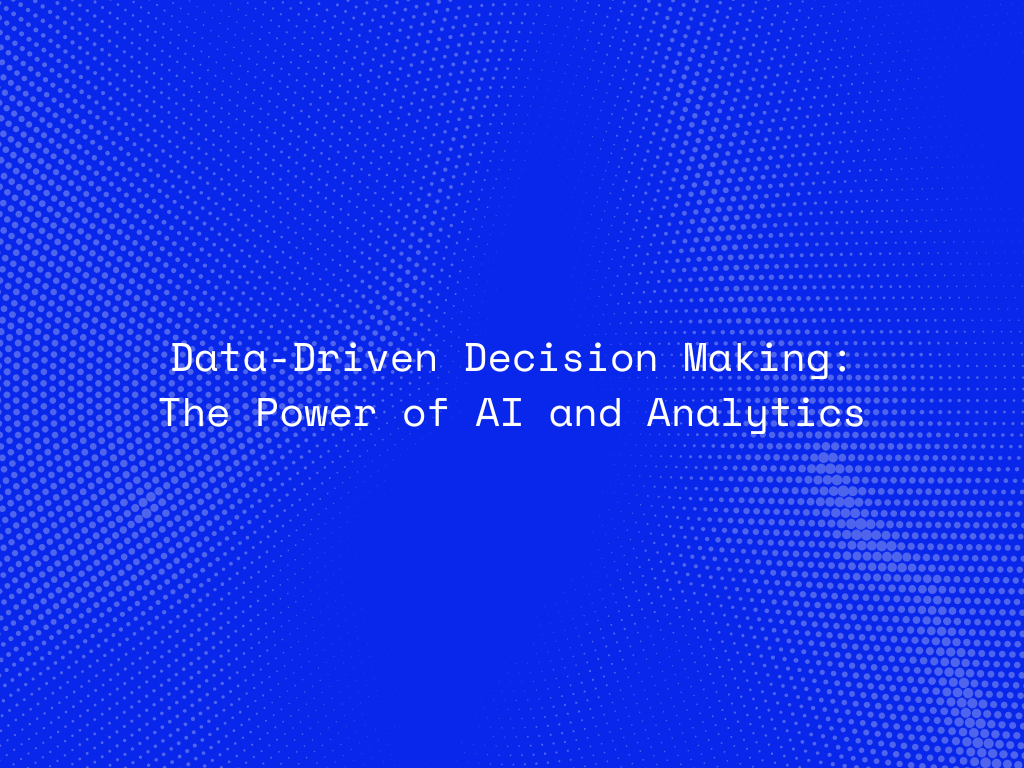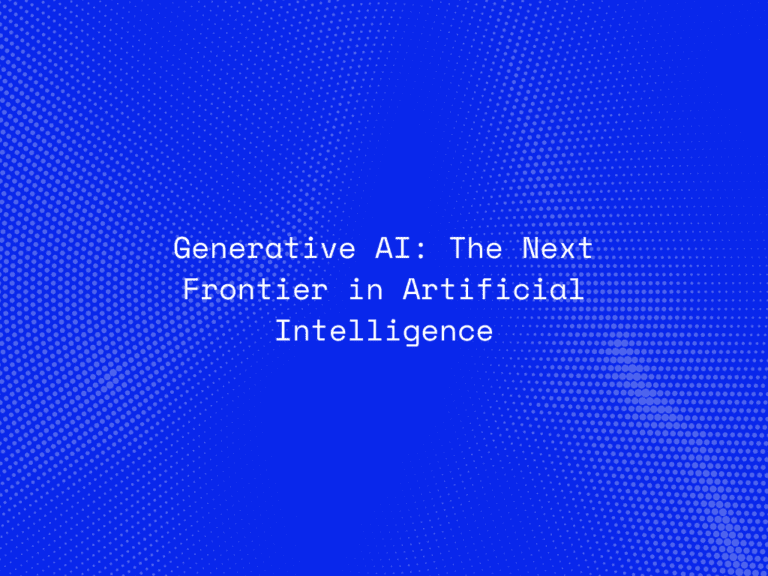In today’s fast-paced digital world, businesses must make quick, accurate, and strategic decisions to stay competitive. Traditional decision-making processes, often based on intuition or past experiences, no longer suffice in an era dominated by big data, artificial intelligence (AI), and advanced analytics.
Data-driven decision making (DDDM) is the practice of using data, analytics, and AI-driven insights to guide business strategies and operational decisions. It helps organizations minimize risks, improve efficiency, and gain a competitive edge by leveraging real-time information.
This article explores the role of AI and analytics in data-driven decision-making, key benefits, implementation challenges, and the future of intelligent decision-making.
Why Data-Driven Decision Making Matters
Businesses generate and collect vast amounts of data from customer interactions, market trends, social media, IoT devices, and internal processes. Without the right tools, this data remains underutilized. AI and analytics enable organizations to:
- Extract meaningful insights from large and complex datasets.
- Identify patterns, correlations, and trends for better forecasting.
- Enhance accuracy and objectivity, reducing human bias.
- Enable real-time decision-making, ensuring agility and responsiveness.
- Improve operational efficiency by optimizing resource allocation.
From personalized marketing campaigns to predictive maintenance in manufacturing, data-driven decisions are reshaping industries across the globe.
The Role of AI and Analytics in Decision-Making
1. AI-Powered Predictive Analytics
AI-driven predictive models analyze historical data to forecast future outcomes. This helps businesses anticipate customer behavior, market trends, and potential risks, enabling proactive decision-making.
Example: Retailers use AI to predict consumer demand and adjust inventory levels, preventing stock shortages or overstocking.
2. Prescriptive Analytics for Smarter Strategies
Prescriptive analytics goes beyond predictions by providing actionable recommendations. AI analyzes multiple scenarios and suggests the best course of action based on real-time data.
Example: Healthcare providers use AI-driven prescriptive analytics to recommend treatment plans tailored to patient history and medical data.
3. Real-Time Decision Making with AI
In industries like finance, cybersecurity, and autonomous systems, real-time decision-making is critical. AI enables businesses to process live data streams and make split-second decisions.
Example: Fraud detection systems in banks analyze transactions in real time to identify and block suspicious activities.
4. AI-Powered Business Intelligence (BI) Tools
Modern BI platforms integrate AI to automate data analysis, visualization, and reporting. AI-driven BI tools offer:
- Automated dashboards with real-time insights.
- Natural language processing (NLP) for querying data conversationally.
- AI-powered data storytelling, making complex insights easier to understand.
Example: Executives use AI-powered BI dashboards to track sales performance, customer engagement, and operational efficiency.
5. Machine Learning for Anomaly Detection
AI detects outliers and anomalies in data, helping businesses identify fraud, security threats, and operational inefficiencies.
Example: AI in cybersecurity flags unusual network activity, preventing potential data breaches.

Industries Leveraging Data-Driven AI Decision-Making
1. Finance and Banking
- Fraud detection using AI-based anomaly detection.
- Credit risk assessment with predictive analytics.
- Algorithmic trading optimizing investments in real time.
2. Healthcare and Pharmaceuticals
- AI-powered diagnostics for detecting diseases early.
- Personalized medicine using patient data analytics.
- Predictive analytics for hospital resource planning.
3. Retail and E-Commerce
- Customer behavior analysis for personalized marketing.
- Dynamic pricing strategies based on demand forecasting.
- AI-driven chatbots for customer support.
4. Manufacturing and Supply Chain
- Predictive maintenance reducing downtime and repair costs.
- Supply chain optimization using AI-based forecasting.
- Robotics and automation enhancing production efficiency.
5. Smart Cities and IoT
- AI-driven traffic management for reducing congestion.
- Energy optimization using smart grids.
- AI-powered surveillance for enhanced security.
Challenges in Implementing Data-Driven Decision Making
Despite its advantages, organizations face several challenges when adopting AI and analytics for decision-making:
- Data Quality Issues – Inaccurate, inconsistent, or incomplete data can impact decision accuracy.
- Integration Complexities – Merging data from multiple sources (cloud, IoT, enterprise applications) requires robust data engineering.
- Privacy and Compliance Risks – Adhering to GDPR, CCPA, and AI Act regulations is crucial for ethical AI usage.
- Skill Gaps – Businesses need data scientists, AI engineers, and domain experts to extract meaningful insights.
- AI Bias and Interpretability – Ensuring AI models are fair, explainable, and unbiased is a growing concern.
Overcoming these challenges requires strong data governance, AI ethics frameworks, and investment in AI literacy across organizations.
The Future of Data-Driven Decision Making
The future of AI-driven decision-making will be shaped by advancements in AI, automation, and edge computing. Key trends to watch:
1. AI-Augmented Decision Making
AI will work alongside humans, providing context-aware recommendations while allowing human oversight in critical decisions.
2. Autonomous Decision Systems
Industries like self-driving cars, robotic process automation (RPA), and smart manufacturing will see AI-powered autonomous decision-making systems evolve.
3. AI-Driven Explainability and Transparency
The rise of Explainable AI (XAI) will make AI decisions more transparent, interpretable, and accountable, reducing risks of bias and unfairness.
4. AI in Real-Time Edge Decision Making
With edge AI and 5G, real-time analytics will enable instant decision-making at the edge—critical for IoT, autonomous drones, and industrial automation.
5. AI-Powered Decision Intelligence Platforms
Next-gen Decision Intelligence platforms will integrate AI, NLP, and cognitive automation, making complex data-driven decisions effortless.
Conclusion
AI and analytics have transformed data-driven decision-making, enabling businesses to optimize operations, reduce risks, and enhance customer experiences. Organizations that leverage AI for predictive insights, real-time processing, and automated decision-making will gain a significant competitive advantage.
However, successful implementation requires high-quality data, AI transparency, compliance with ethical standards, and continuous upskilling of the workforce. As AI continues to evolve, businesses must embrace next-gen analytics and decision intelligence platforms to stay ahead in an increasingly data-driven world.
By combining human expertise with AI-driven analytics, businesses can unlock unprecedented opportunities for innovation, efficiency, and growth.




